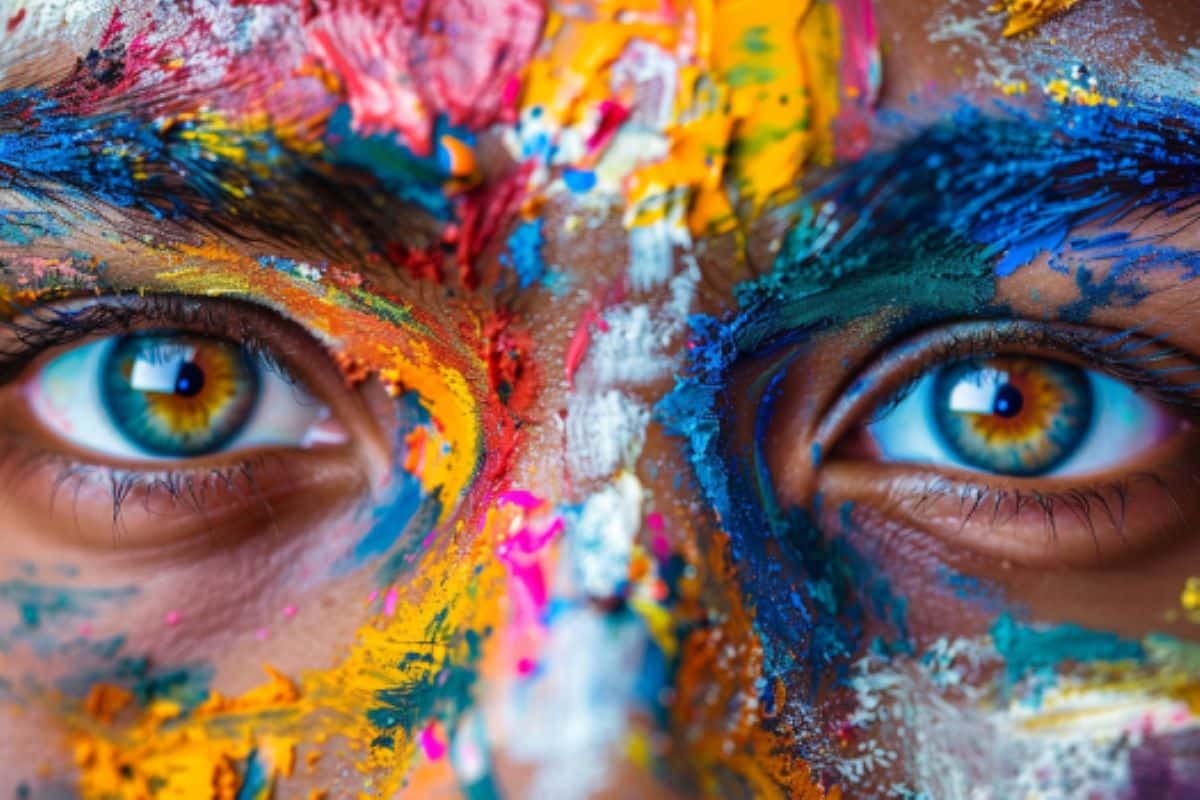Summary: Facial expression influences the color memory effect, with angry and fearful faces being more strongly affected than neutral faces. Participants perceived achromatic angry and fearful faces as red-yellow, indicating that expression affects color memory.
This research highlights how emotions and memory color are interconnected. Future studies aim to examine attention to different facial expressions and colors.
Key facts:
- Angry and fearful faces affect memory color more than neutral faces.
- Participants saw achromatic angry and fearful faces as red-yellow.
- A study published in Journal of Vision on 31 May 2024
source: TUT
The relationship between facial expression and the color memory effect has been clarified by a collaborative effort involving the Department of Cognitive Neurotechnology and the Laboratory of Visual Perception and Cognition at the Department of Computer Science and Engineering at Toyohashi University of Technology.
The color memory effect refers to the phenomenon where knowing the typical color of a particular object (memory color) influences the recognition of its actual color.
This study showed that angry and fearful faces were more affected in terms of color recognition due to the memory color effect compared to neutral faces, and that memory colors varied between expressions.
The results of this study were published online in Journal of Vision on 31 May 2024
Details
The face is an important feature for recognizing individuals, and as evidenced by Japanese phrases such as “kaoiro wo ukagau” (Look at the complexion; i.e., be sensitive to someone’s mood, read someone’s expression), facial color plays a key role in reading emotions per person.
Recent research has shown that facial color alters an individual’s judgment of an expression, with a ruddy face tending to be judged as angry, for example, even when presented with faces with the same features.
However, it was not well understood whether everyday memories of face colors or memory colors formed by knowing the typical colors of specific objects also varied between expressions.
Therefore, the research team focused on the phenomenon where color recognition changes according to memory colors, known as the color memory effect, and used images of faces with different expressions and colors to conduct a psychophysical experiment.
Participants in the experiment were asked to choose which color a face appeared to have from two options (the “typical color” and the “opposite color”) for the face images presented to them.
Typical color means the color that the observer holds as knowledge about the object and refers to skin color, among others, in the case of faces. An opposite color refers to the color located opposite the typical color in terms of hue.
The experiment used three expression images with an angry face, a neutral face, and a fearful face of different colors. The experiment was conducted in a dimly lit room maintained at constant brightness, thus mitigating the effect of ambient brightness on color appearance.
The results of the experiment showed that angry and fearful faces, which are actually achromatic (gray), appear tinted red-yellow, their typical color, more than achromatic neutral faces.
Because red-yellow, the memory color for angry and fearful faces, has a higher saturation than for neutral faces, it is possible that the achromatic face color appeared tinted with the typical color.
This is similar to reports from previous research that expressions introduce a bias toward remembered face color, and the recalled face color was red-yellow with a higher saturation than when it was actually observed.
First-year PhD candidate in the Department of Computer Science and Engineering and lead author of this study, Yuya Hasegawa, explains, “In general, the color that anger brings to mind is red, and red is also often used when expressing anger. If so, do people regularly and empirically remember angry faces as redder than neutral ones?
“We hypothesized that if people change the color of their faces depending on their expressions when they are remembered, the memory color should differ for each expression, which inspired this study.”
Future prospects
These results are the first to reveal that expressions influence faces at the color level of memory. Memory and attention are closely related.
In the future, we will test whether attention tends to be directed to “red angry faces” compared to normal angry faces or red neutral faces, and explore how to further our understanding of the mechanisms by which remembered face color differs by expression.
Acknowledgments
This research was supported by JSPS Grants-in-Aid for Scientific Research JP22K17987, JP20H05956 and JP20H04273.
About this news about facial expression and memory research
Author: Shino Okazaki
source: TUT
Contact: Shino Okazaki – TUT
Image: Image credit: Neuroscience News
Original research: Free access.
“Facial Expression Affects Memory for Face Colors” by Hasegawa, Y et al. Journal of Vision
Summary
Facial expression affects the memory of facial colors
Facial color affects the perception of facial expressions, and emotional expressions predispose how facial color is remembered. However, it remains unclear whether facial expression affects day-to-day memory for face color.
The color memory effect shows that knowledge of typical colors influences the perception of the actual color of given objects. To investigate the memory effect of face color, we tested whether the color effect of memory for faces varied by facial expression.
We calculated the subjective achromatic point of the facial expression image stimulus and compared the degree to which it was shifted from the actual achromatic point between the facial expression conditions.
We hypothesized that if memory for face color is influenced by the color of facial expression (eg, anger is a warm color, fear is a cold color), then the subjective achromatic point would vary with facial expression.
In Experiment 1, we recruited 13 participants who color-corrected the facial expression stimuli (anger, neutral, and fear) and the banana stimulus to be achromatic.
No significant differences in subjective achromatic point were observed between facial expressions. We subsequently conducted Experiment 2 with 23 participants because Experiment 1 did not account for sensitivity to changes in face color; people perceive greater color differences in faces than in non-faces.
Participants chose which face color they thought was the expressive stimulus by selecting one of two options provided.
The results showed that the subjective achromatic points of angry and fearful faces significantly shifted to the opposite color direction compared to neutral faces in the brief presentation conditions.
This research suggests that the memory color of faces differs depending on the facial expression and supports the idea that the perception of emotional expressions can change the memory of the face color.



